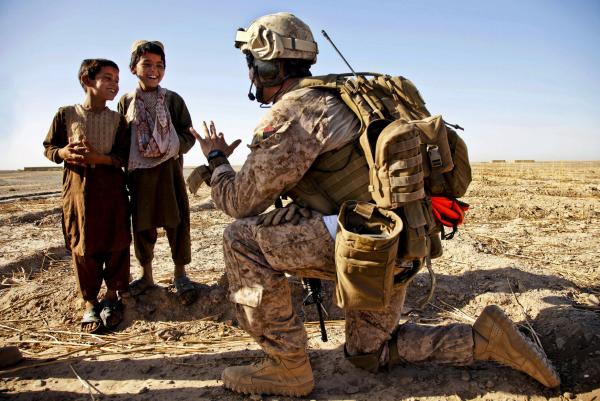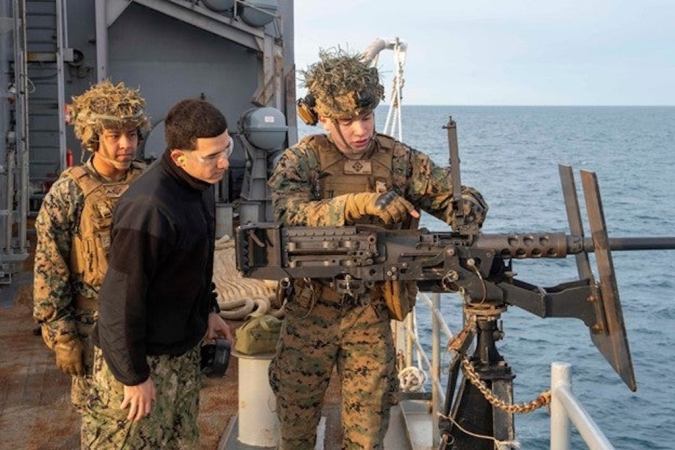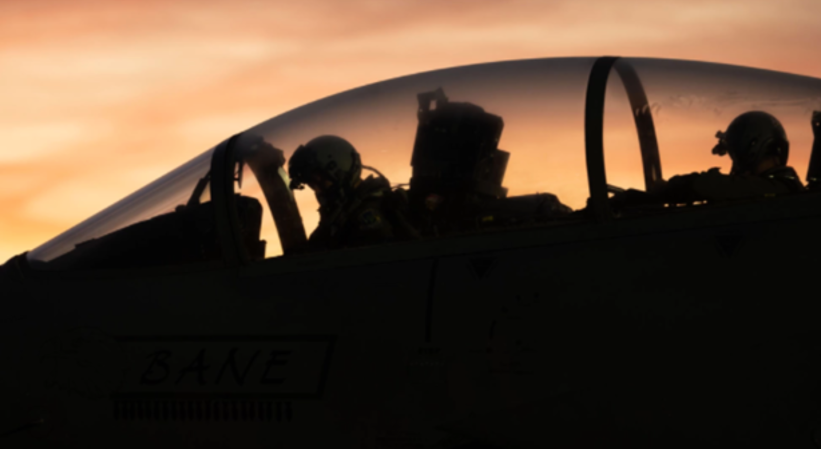The military has very talented photographers in the ranks, and they constantly attempt to capture what life as a service member is like during training and at war. Here are the best military photos of the week:
AIR FORCE:
Firefighters from the 151st Civil Engineer Squadron extinguish a simulated airplane fire June 7, 2016, at the Salt Lake City Aircraft Rescue Fire Fighters Training Center. The state-of-the-art facility is equipped with a simulator, which allows for interior and exterior training and includes a multitude of various fire scenarios.

An A-10C Thunderbolt II assigned to the 75th Fighter Squadron performs a low-angle strafe during the Hawgsmoke competition at Barry M. Goldwater Range, Ariz., June 2, 2016. The two-day competition included team and individual scoring of strafing, high-altitude dive-bombing, Maverick missile precision and team tactics.

ARMY:
U.S. Army Soldiers, assigned 2nd Infantry Brigade Combat Team, 3rd Infantry Division, carry equipment through a pond during the team obstacle course at the French Jungle Warfare School near Yemen, Gabon, June 9, 2016.

A U.S. Army Soldier, assigned to 1st Brigade Combat Team, 2nd Infantry Division, provides security during Decisive Action Rotation 16-06 at the National Training Center in Fort Irwin, Calif., May 16, 2016.

NAVY:
DILI, Timor Leste (June 8, 2016) Crew members assigned to the Blackjacks of Helicopter Sea Combat Squadron (HSC) 21 move an MH-60S helicopter into the hangar aboard hospital ship USNS Mercy (T-AH 19). Deployed in support of Pacific Partnership 2016, Mercy is on its first stop of the 2016 mission. Pacific Partnership has a longstanding history with Timor Leste, having first visited in 2006, and four subsequent times since. Medical, engineering and various other personnel embarked aboard Mercy will work side-by-side with partner nation counterparts, exchanging ideas, building best practices and relationships to ensure preparedness should disaster strike.

PACIFIC OCEAN (JUNE 4, 2016) An F/A-18E from the Flying Eagles of Strike Fighter Squadron (VFA-122) launches from the USS Carl Vinson (CVN 70) flight deck during night flight operations (left) while an EA-18G Growler from the Vikings of Electronic Attack Squadron (VAQ-129) taxis onto a catapult (right). The ship is underway conducting command assessment of readiness and training (CART) II off the coast of Southern California.

MARINE CORPS:
Marines with 2nd Battalion, 5th Marine Regiment, 1st Marine Division conduct military operations on urban terrain during a field exercise (FEX) at Camp Pendleton, California, May 24, 2016. FEX is designed to sharpen the battalion’s combat capabilities.

Marines with 1st Battalion, 2nd Marine Regiment, 2nd Marine Division advance down range during the Eager Lion 16 final exercise in Al Quweyrah, Jordan, May 24, 2016. Eager Lion is a recurring exercise between partner nations designed to strengthen military-to-military relationships, increase interoperability, and enhance regional security and stability.

COAST GUARD:
Flight Mechanics serve a dual role in the aircraft. First, they help the pilots monitor performance and flight instruments. Their knowledge of the aircraft and technical expertise make them invaluable resources for identifying and troubleshooting aircraft malfunctions. Second, they are responsible for operating the helicopter’s hoist. This entails both physically manipulating the hoist as well as providing conning commands to the pilot at the controls.

The pilots at Air Station Savannah come from a myriad of backgrounds. For some, this is their first operational aviation tour. Others have completed multiple tours around the country in places like Kodiak, AK and Puerto Rico. We also have a large number of Direct Commission Aviators who transferred over to the Coast Guard from other services such as the Army and Marines.



























